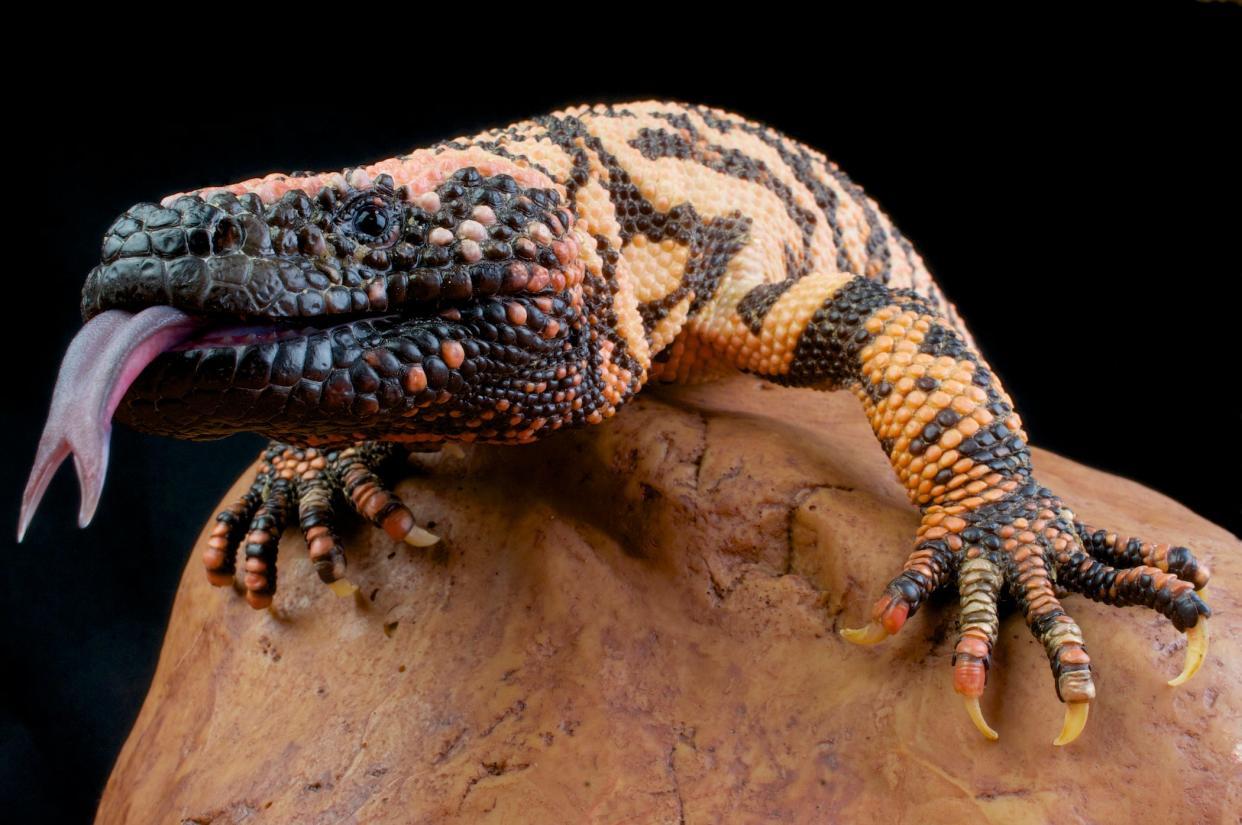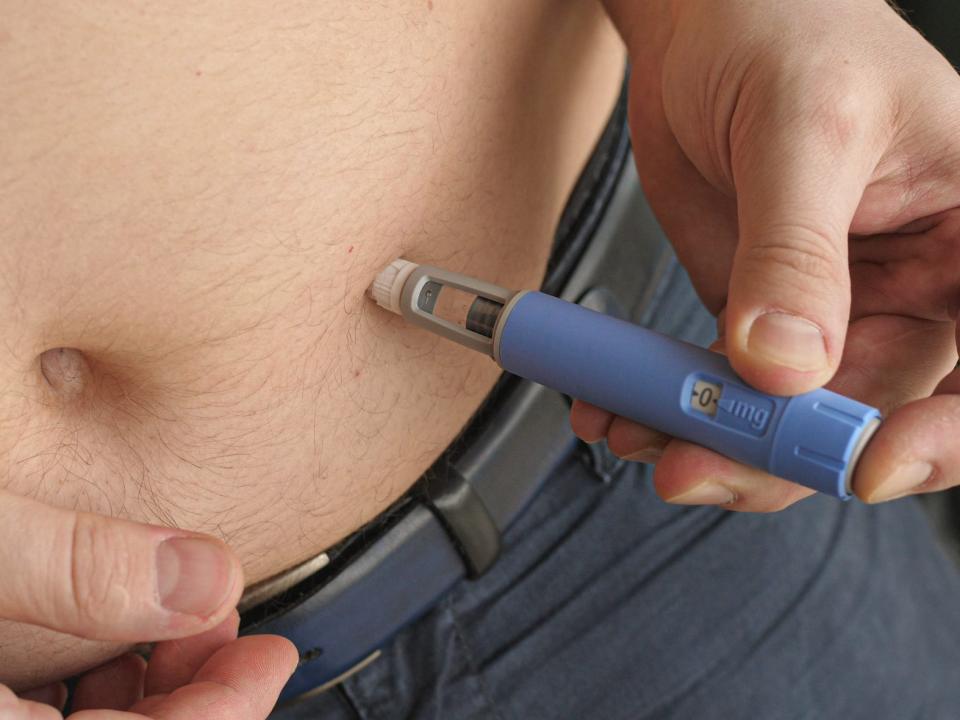We wouldn't have Ozempic without Gila monsters — their hunger-regulating venom inspired weight-loss drugs

Gila monsters' venom has a compound in it that can regulate hunger.
It's similar to a hormone people produce in our intestines — but the lizard version is longer-acting.
The find led to the development of a new class of obesity and diabetes drugs, including Ozempic.
What does the Gila monster have that we don't have? The key to more effortless weight-loss, apparently.
It turns out the venom of a small, Southwestern lizard — the only venomous lizard in America — played a critical role in developing a whole new class of blockbuster anti-obesity drugs, called GLP-1s.
One of the newest GLP-1s is called semaglutide. It's sold under the brand names Ozempic and Wegovy — and it is taking Hollywood by storm. Rising demand for these types of drugs, which mimic key hormones that tell us to feel full, have led to severe shortages of GLP-1s in recent months.
But before semaglutide became the darling shot of Hollywood, scientists discovered that compounds in the venom of Gila monsters could help drug developers make better diabetes medications than they'd ever had before.
Gila monster hormones can regulate blood sugar very well
It all started back in the early 1990s, when government researcher Dr. John Eng discovered that Gila monsters have a special hormone in their venom. The hormone is quite similar to a hunger-regulating hormone humans harbor in the small intestine, which helps control blood sugar levels.
In people, it's called glucagon-like peptide-1. In Gila monsters, Eng named it exendin-4.
Exendin-4 degrades more slowly than the human form of GLP-1, lasting for hours instead of minutes. That means it's a much better model for drug development, since it wouldn't be practical to take a drug dozens of times a day.

At first, Eng tried to point this remarkable feature of Gila monster spit out to pharmaceutical makers and the government. He shopped his idea around at the Department of Veterans Affairs, where he worked at the time, as well as several different pharmaceutical companies, but didn't have much success. In the end, he patented the molecule in 1995, and licensed the discovery to a now-defunct biotech startup called Amylin.
Amylin used Eng's Gila monster research to create a synthetic hormone, called extenatide. Extenatide was approved by the Food and Drug Administration (FDA) in 2005 to treat type 2 diabetes. It's still used by hundreds of thousands of children and adults with diabetes today.
A safe obesity treatment that slows digestion and curbs cravings
Extenatide was the very first GLP-1-mimicking drug. It ushered in a whole new class of diabetes medications that are arguably safer, and more effective, than previous treatments were. More recently, GLP-1s have been designed to target obesity, too.
Today's GLP-1s work to help people lose weight because they mimic a hormone our small intestine makes naturally, which regulates hunger in several different key ways.
When a patient's blood sugar levels are high, GLP-1 drugs send signals to their pancreas to secrete more insulin — but the hormone-mimicking doesn't stop there. GLP-1s also send signals to a person's brain, telling their body to feel fuller with less food. Finally, GLP-1s slow down digestion, changing the way a person's body turns food into energy.
Originally, patients had to take extenatide twice a day. But, over time, newer, more advanced GLP-1s have come to market, with even longer release times (no offense, Gila monsters).
We need animals to create medical breakthroughs like Ozempic, scientist says

Today, most GLP-1s are injected once a day, or just once a week. But they arguably wouldn't be here if it wasn't for Eng's work — which created the very first GLP-1 drug.
In a statement to Insider, Novo Nordisk, the company that makes Wegovy and Ozempic, said that Gila monsters and the discovery of exendin-4 "did not have anything to do with our decision to develop long-acting GLP-1 receptor agonists" for obesity, because "that was based on GLP-1 biology in humans."
But the company also said that "the GLP-1-like effect of exendin-4" in Gila monsters was "an important contribution to the field," as it led to the development of the very first injectable drug of its kind.
Eng, who worked for many years at the Bronx VA medical center, was awarded a 2013 Golden Goose award, a prize meant to honor federally-funded research that leads to major biomedical breakthroughs. And, as recently as 2018, he was still collecting some royalties on the product, according to ProPublica.
Funny enough, he had never actually seen a Gila monster up close until after the drug designed to mimic Gila venom was FDA approved.
"It really is a beautiful lizard," he told Diabetes in Control in 2007. "The question is, what other animal has something to teach us that can be of future value? And plants, too? We will never know their value if they are gone."
Read the original article on Insider


